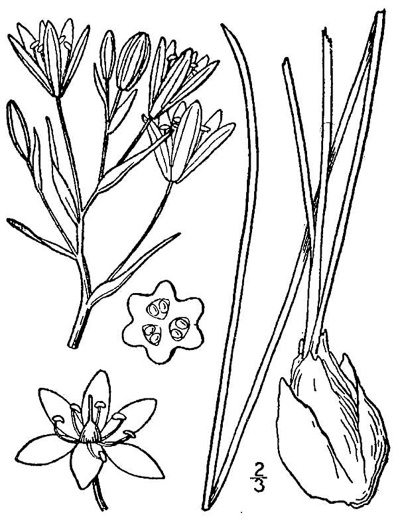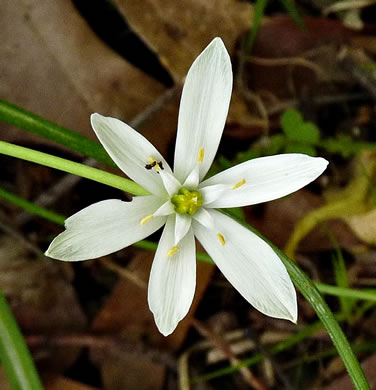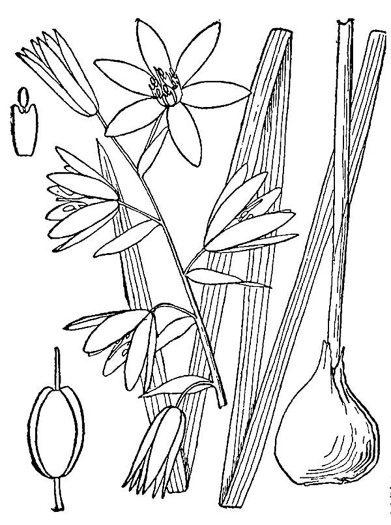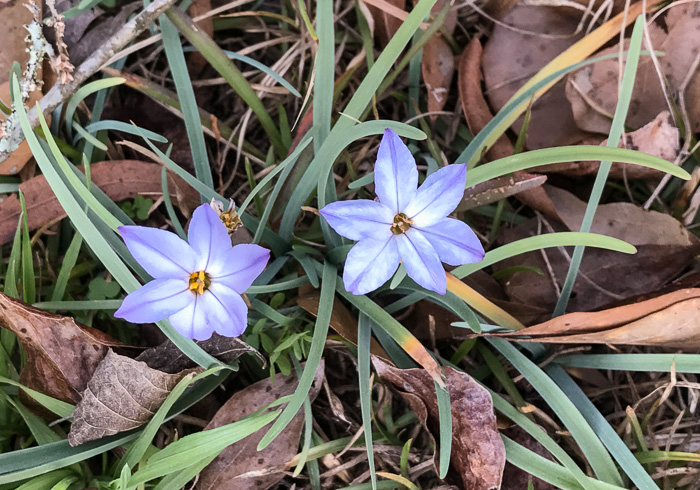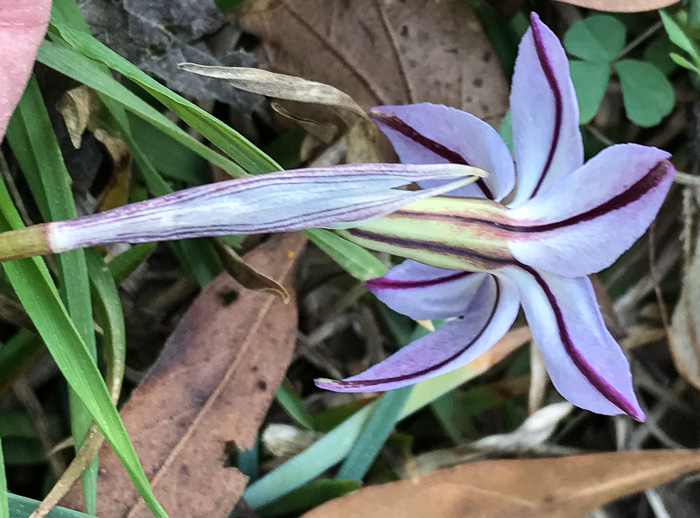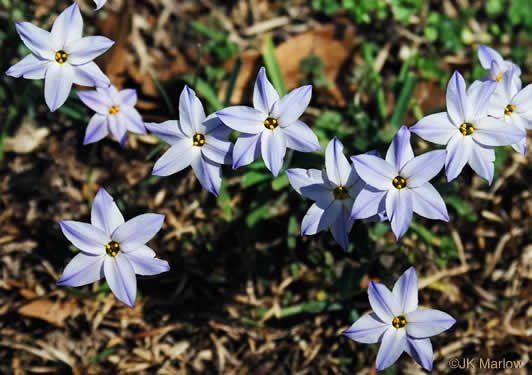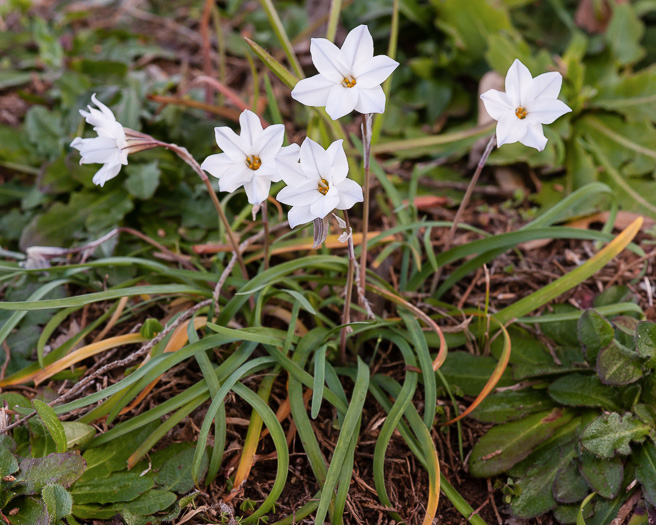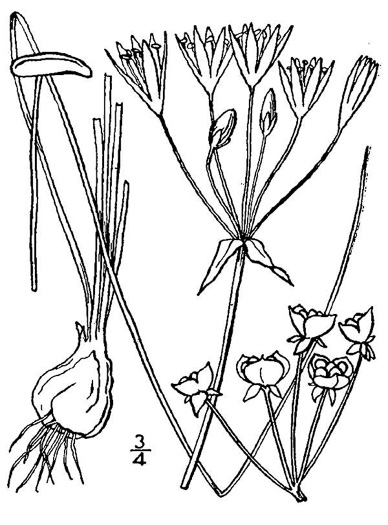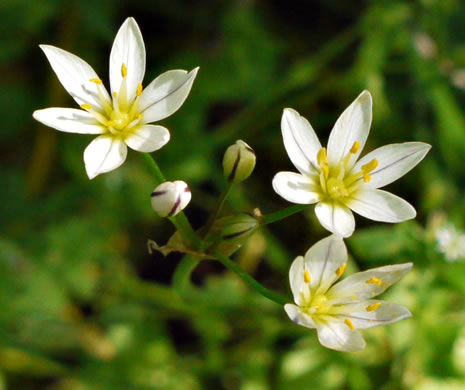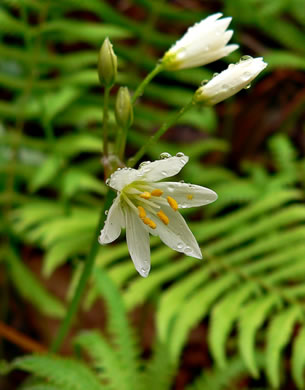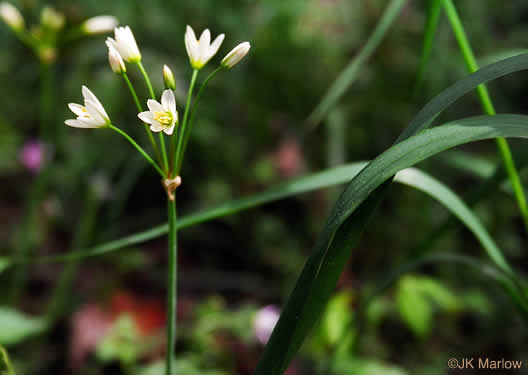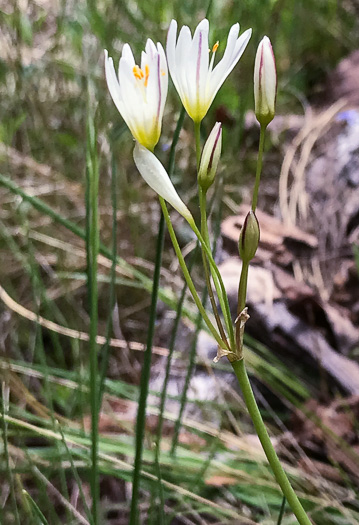Your search found 14 image(s) of False Garlic and Star-of-Bethlehem.
To see larger pictures, click or hover over the thumbnails.
To go to the plant's detail page, click its name.
 Habitat: Lawns, old fields, bottomlands, forests, commonly cultivated
Habitat: Lawns, old fields, bottomlands, forests, commonly cultivated
Inflorescence a corymb, which elongates into a raceme as fruits develop, per Wildflowers of Tennessee, the Ohio Valley, and the Southern Appalachians (Horn, Cathcart, Hemmerly, & Duhl, 2005).
The tepals are spreading and white with a broad green stripe on the back, per Wildflowers of Tennessee (Carman, 2005).
Stamens about half the length of the perianth, the filaments membranous-winged, per Vascular Flora of the Carolinas (Radford, Ahles, & Bell, 1968).
 Habitat: Lawns and suburban woodlands, commonly cultivated
Habitat: Lawns and suburban woodlands, commonly cultivated
 Habitat: Commonly cultivated, escaping to lawns, suburban woodlands, bottomlands, disturbed places
Habitat: Commonly cultivated, escaping to lawns, suburban woodlands, bottomlands, disturbed places
Perianth rotate to salverform, tube 8-13mm long, per Vascular Flora of the Carolinas (Radford, Ahles, & Bell, 1968).
Scape terminated by a 2-lobed or parted membraneous spathe & a solitary flower, per Vascular Flora of the Carolinas (Radford, Ahles, & Bell, 1968).
Has an onion-like odor when crushed. Petal midrib usually darker than petal, per Weeds of Southern Turfgrasses (Murphy et al., 1992).
Leaves linear, 7-15cm long, 3-5mm wide, spreading. Scape erect, per Vascular Flora of the Carolinas (Radford, Ahles, & Bell, 1968).
 Habitat: Around granite flatrocks, in glades and barrens of various kinds, in open woodlands, prairies, and also weedy in fields and along roadsides
Habitat: Around granite flatrocks, in glades and barrens of various kinds, in open woodlands, prairies, and also weedy in fields and along roadsides
The 6 tepals, about 0.5" long, are spreading and white, per Wildflowers of Tennessee (Carman, 2005).
Stamens are about 2/3 the length of the tepals, per Wildflowers of Tennessee, the Ohio Valley, and the Southern Appalachians (Horn, Cathcart, Hemmerly, & Duhl, 2005).
Inflorescence a loose terminal umbel, per Wildflowers of Tennessee, the Ohio Valley, and the Southern Appalachians (Horn, Cathcart, Hemmerly, & Duhl, 2005).
The 6 tepals sometimes have a green or purple midrib on the back, per Wildflowers of Tennessee (Carman, 2005).

